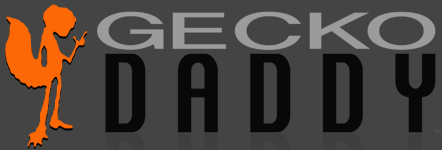Leopard Gecko Genetics—Part 2
We previously introduced the basics of leopard gecko genetics in our article “Leopard Gecko Genetics—Part 1.” This follow-up post will introduce the concept of a double recessive—an animal that displays two recessive traits. It’s time to dust off those biology cobwebs again!
In our previous post we mentioned that the genotype is the alleles of a certain characteristic. For example we would write a genotype as YyZz. The phenotype is the way the animal appears. Though the genotype shows a het y and a het z trait, we actually see the Y and the Z.
As you begin breeding leopard geckos, you quickly become infatuated with different traits—different genetic combinations. It’s exciting to pair two geckos together with the hope of creating something new and different.
Here is an example of how you would pair a male albino gecko with a female patternless gecko to create an albino patternless. Let’s assume that the patternless trait is represented by a “pp” and the albino trait is represented by an “aa”. Here is the
The result of this crossing is 100% het albino het patternless (genotype = AaPp, phenotype = normal). Now, let’s say we take a male and female from this crossing and pair these together. This means we have two double hets and the
So, the outcome is essentially as follows (remember these statistics are based on producing hundreds of geckos):
1 out of 16 or 6.25% will be absolutely normal (genotype = AAPP, phenotype = normal).
2 out of 16 or 12.5% will be het patternless (genotype = AAPp, phenotype = normal).
1 out of 16 or 6.25% will be patternless (genotype = AApp, phenotype = patternless).
2 out of 16 or 12.5% will be het albino (genotype = AaPP, phenotype = normal).
4 out of 16 or 25% will be het albino het patternless (genotype = AaPp, phenotype = normal).
2 out of 16 or 12.5 % will be patternless het albino (genotype = Aapp, phenotype = patternless).
1 out of 16 or 6.25% will be albino (genotype = aaPP, phenotype = albino).
2 out of 16 or 12.5% will be albino het patternless (genotype = aaPp, phenotype = albino).
1 out of 16 or 6.25% will be albino patternless (genotype = aapp, phenotype = albino patternless).
Now you can see that after two generations you have a 6.25% chance of producing the coveted albino patternless! Remember that these numbers represent the chances, not the actual outcomes. If you are lucky, you could achieve a double recessive! If you’re really lucky you could get more. Do you feel lucky? Well do ya?


